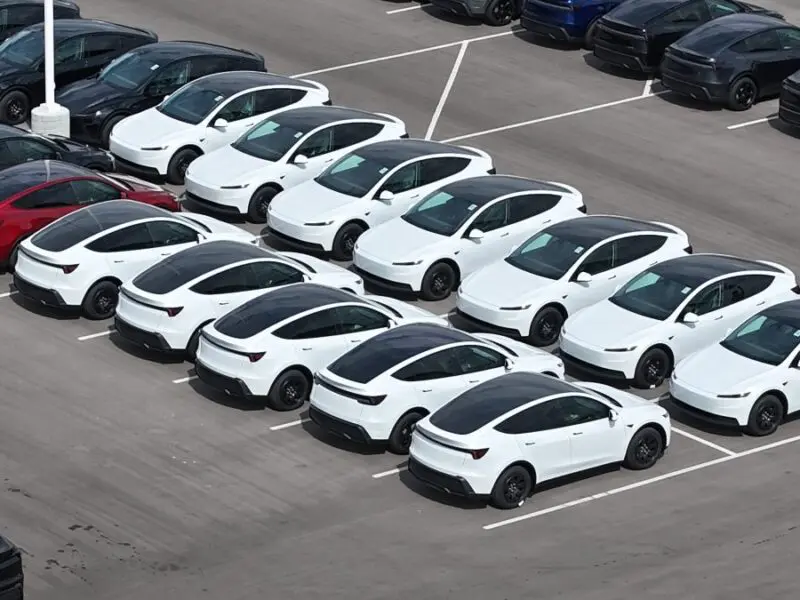
Electric Momentum: Tesla, Hyundai, and Global EV Shifts Define a Week of Rapid Evolution
The last week in electric mobility has showcased the sheer speed at which innovation, regulation, and market competition are transforming the global vehicle landscape. From Tesla’s rapidly advancing production programs and autonomous technologies to Hyundai’s push for ultra-affordable EVs, and government milestones in EV adoption, the message is unmistakable: the electric era is no longer on the horizon—it’s here.
Tesla’s Aggressive Expansion: From Affordable EVs to Autonomy
Tesla has dominated headlines with a string of major developments across several fronts. The most eye-catching update is the increased road testing of its futuristic Cybercab, a compact two-door model with no steering wheel or pedals. The car represents Tesla’s next leap toward full autonomy. Early engineering tests, spotted across key markets, are paving the way for a planned production rollout in 2026. The radical interior configuration hints at the company’s determination to make vehicle design revolve around autonomous use, not traditional human driving dynamics.
At the same time, the company has started production of a lower-cost EV, marking a critical turn toward affordability—a factor long seen as the key to unlocking mass EV adoption. Drone footage from Tesla’s Texas Gigafactory revealed dozens of completed cars ready for customer delivery, reflecting how Tesla’s cost-optimized strategy may drive pressure on competitors struggling to maintain profit margins in the electric space.
In parallel, Australians are seeing new ways to access Tesla’s most advanced software. The company’s FSD Supervised (Full Self-Driving) software is now available on a subscription basis in both Australia and New Zealand. This move makes high-level assisted driving technology more accessible by removing the upfront purchase barrier. Yet, as with many Tesla initiatives, enthusiasm has been met with skepticism. Some early owners, including Tesla’s first Australian customer, have publicly voiced frustration with inconsistent software updates and feature access, with legal investigations and class actions now being reported.
New South Wales Signals a Milestone in EV Uptake
Beyond Tesla, the transition narrative in Australia hit an important symbolic milestone: New South Wales (NSW) surpassed 100,000 fully electric vehicles on its roads. However, the scale of transition remains relative—more than 4.6 million fossil-fueled vehicles still dominate the state. Tesla’s share of Australian EVs has also dipped below 50 percent as new brands, particularly from China, Korea, and Europe, move aggressively into the market with compelling offerings.
This diversification of the market points to the maturation of Australia’s EV ecosystem. Increasing model choice, more competitive pricing, and improved charging infrastructure are helping create a more balanced and resilient foundation for long-term adoption.
Hyundai and the Push for Affordable Electric Options
Hyundai’s recent announcement of its first electric vehicle priced under $30,000 marks a seismic shift in how consumers may perceive EV accessibility. The compact SUV, first launched in China, is part of a broader strategy to democratize electrification by offering lower-cost models that maintain range and reliability. This approach offers a direct challenge to Tesla’s smaller models and to emerging Chinese rivals like BYD and Chery, who have been scaling aggressively in Southeast Asia and Europe.
By focusing on affordability, Hyundai is positioning itself for a potential surge in global demand once EV costs reach parity with gasoline equivalents. This could transform developing markets and middle-income consumers who have so far been priced out of emissions-free mobility.
Chery’s Expanding Footprint: The Jaecoo J5 Arrives Down Under
Chinese manufacturer Chery is confirming its place in Australia’s EV ecosystem with the announcement of the Jaecoo J5 electric SUV, arriving in 2026. The model will feature multiple versions—including a pure-battery variant and a hybrid option—appealing to buyers seeking flexibility during the transition phase. This move underscores how Chinese automakers are targeting export-led growth through design modernization, strong feature sets, and pricing power.
Heavy Industry Joins the Charge: Fortescue’s Electric Haul Trucks
While passenger vehicles remain in the spotlight, Fortescue Metals Group is rewriting industrial transport with its fleet of colossal 240-tonne-capacity electric haul trucks. The company’s engineers describe the journey as a rapid learning curve—a transformation from experimental prototypes to commercial-scale machines ready for mining operations. Electrifying such machinery reduces diesel dependency in one of the most energy-intensive sectors and offers a model for global heavy industry to decarbonize logistics.
The Broader Transition: Renewable Integration and Mobility Redesign
Amid these product announcements and fleet rollouts, other industry voices are highlighting the deeper implications of electrification on national energy security. As one analysis put it, every internal combustion replacement—whether an EV, an e-bike, or even a shift toward public transport—extends existing fuel reserves and lowers vulnerability to imported liquid fuels. Combined with solar and wind energy growth, these efforts represent a holistic re-engineering of how energy is produced, transported, and consumed.
Market Convergence and the Future of Mobility
The convergence of affordability, autonomy, and sustainability across the EV sector signals how diverse this revolution has become. Car design is shifting from hardware to software, ownership models are fragmenting into subscriptions and fleets, and the focus on end-to-end emissions—extending even to mining operations—shows how deeply electrification reshapes the economy.
What these developments reveal is that the electric vehicle story is no longer just about cars—it’s about systems. Tesla’s ramped testing, Hyundai’s cost leadership, Chery’s expansion, Fortescue’s industrial electrification, and state milestones in EV ownership collectively point toward an irreversible global trajectory. The EV world is scaling, integrating, and diversifying faster than ever before, and the pace of the shift underscores one reality: the age of the internal combustion engine is giving way, faster than most imagined, to a networked and electrified future.
All EV Sales Research Team
10/20/2025
